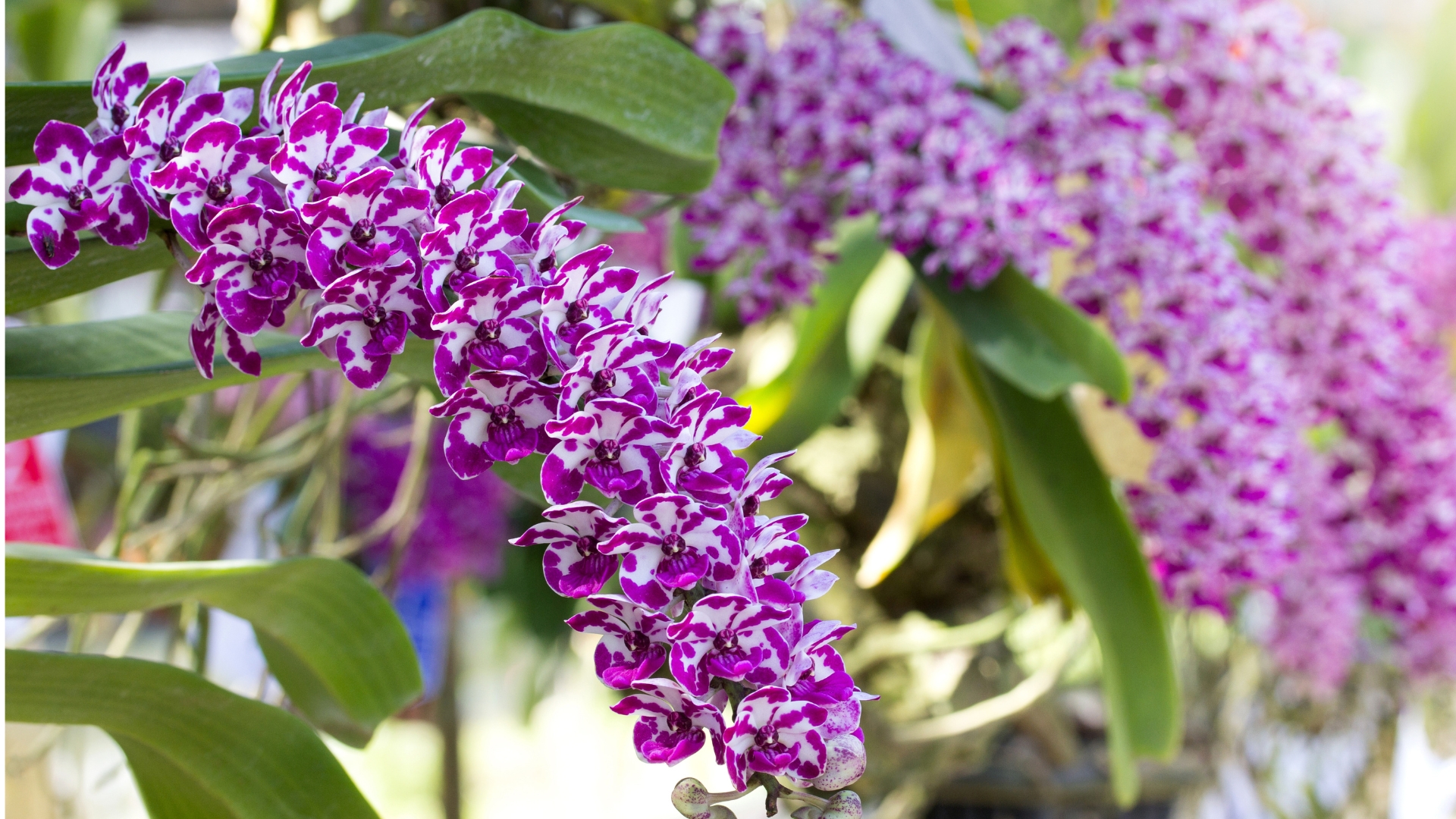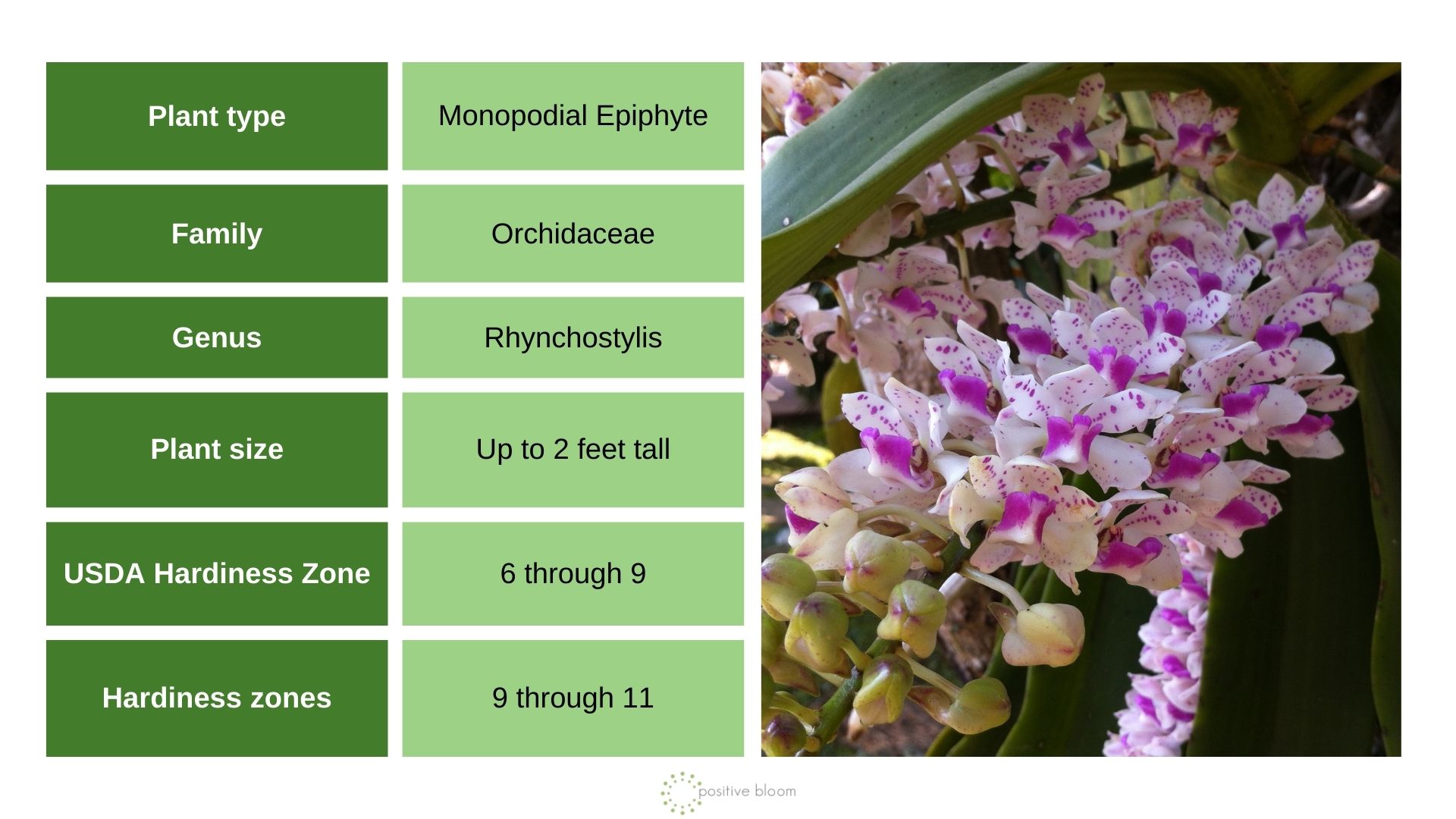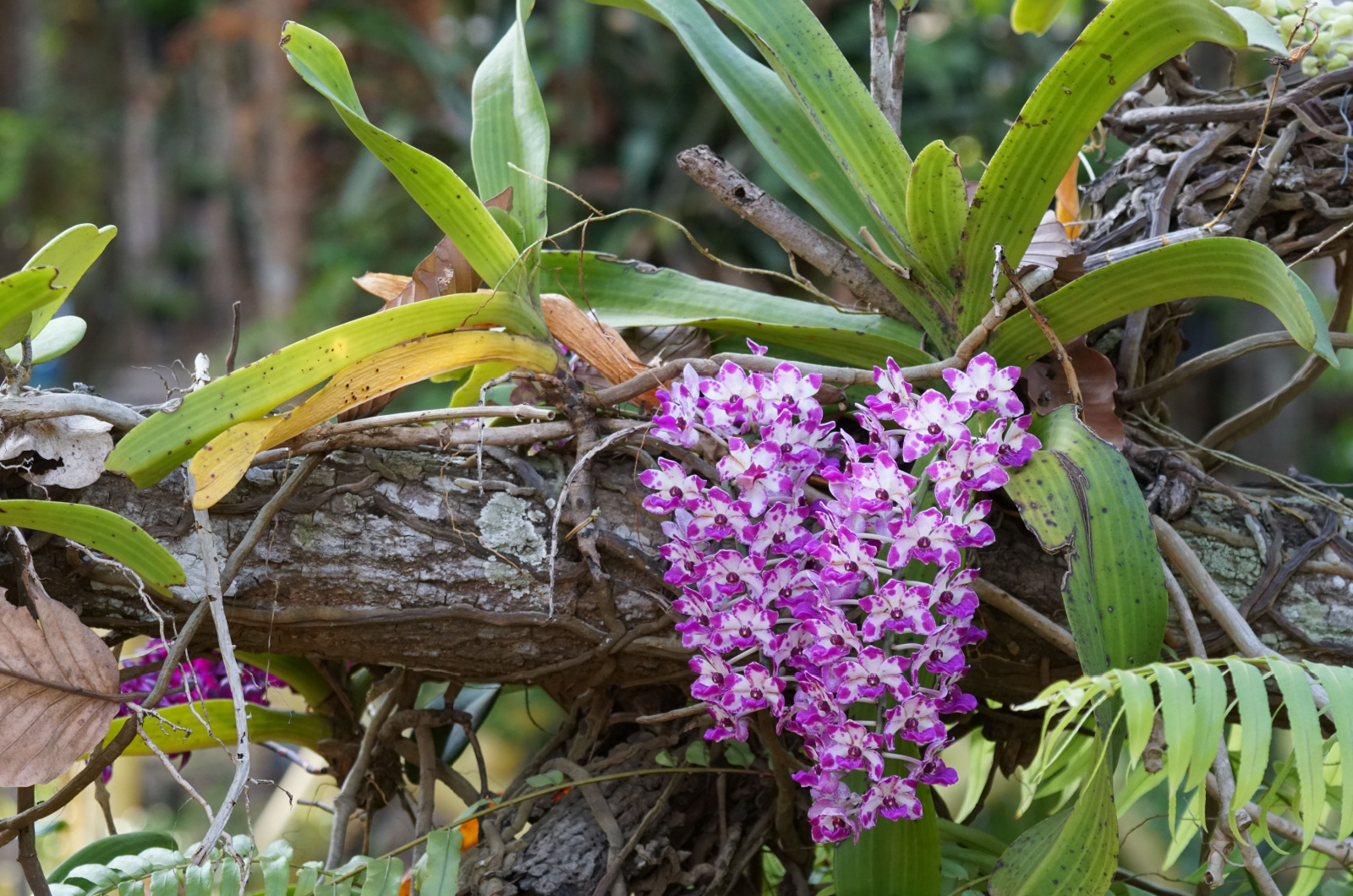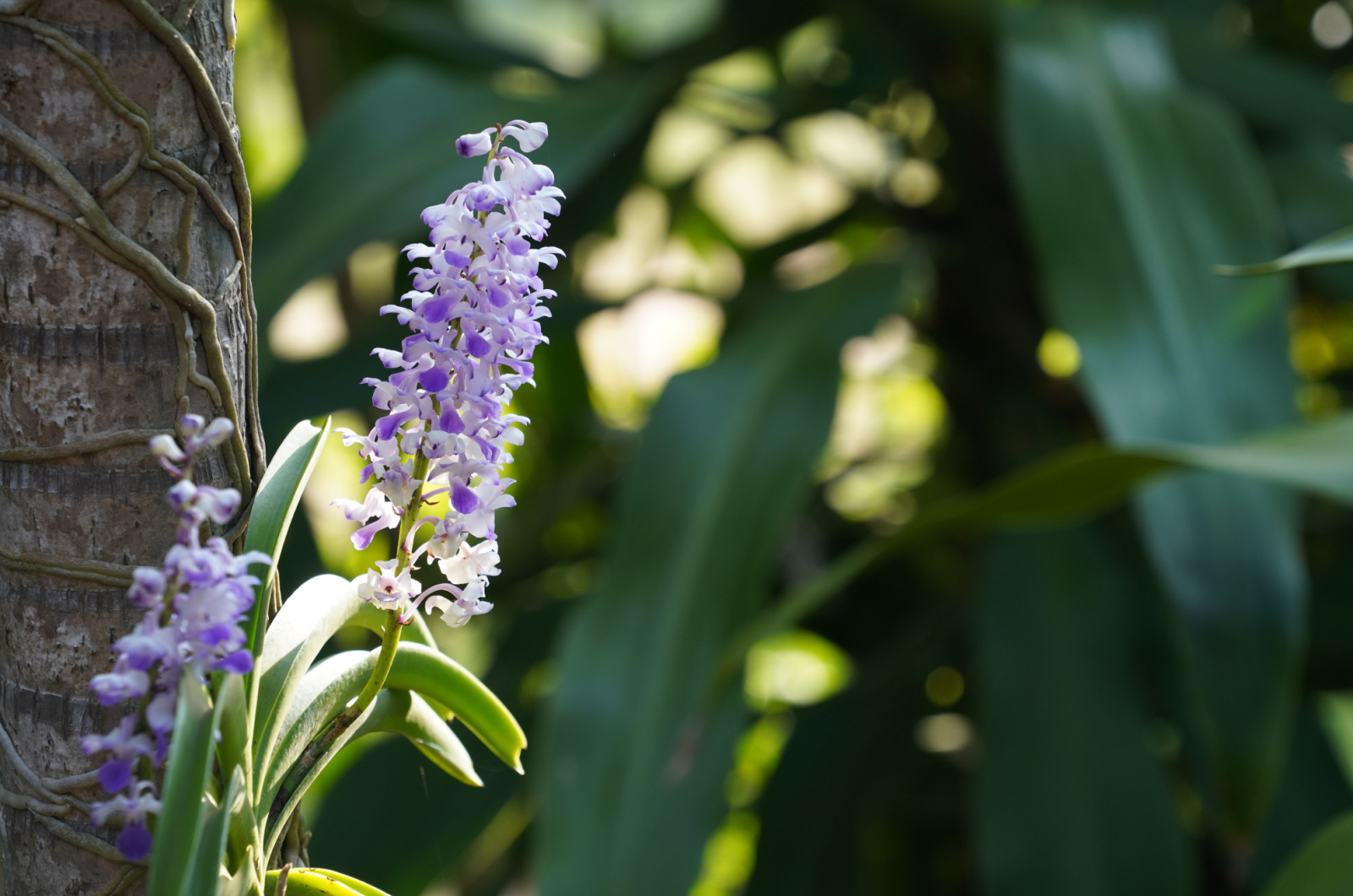Have you heard of the Rhynchostylis genus of orchids? If not, you’re going to learn a lot about them today!
These beautiful tropical orchids bloom profusely, which is why they are becoming famous among orchid collectors. These orchids are not even super hard to grow – simply mimic their natural environment and they’ll grow and thrive.
In this article, we are going to share more details about these unusual orchids. Stay tuned to find out more!
Let’s Meet The Rhynchostylis Foxtail Orchid
The Rhynchostylis genus was discovered by an orchid specialist named Carl Blume in the 1820s.
Although the name comes from the Greek words for “snout” and “column,” the foxtail orchid is the more popular name. This is because their flowers look like fluffy fox tails, hence the nickname.
These tropical orchids are native to Indonesia, Malaysia, Thailand, China, and Southeast India. They are monopodial epiphytes, which means that they grow in trees but are not causing any damage.
They grow vertically and, as they expand, they create new flower spikes between the leaves. Flower spikes consist of tiny, but highly fragrant flowers that come in different colors, including blue, magenta, and purple.
The flower spikes combine ideally with the long, leathery leaves. These orchids are mostly used for ornamental purposes, although some have been used in traditional medicine.
Related: A Complete Care Guide For The Acidanthera (Peacock Orchid)
How To Plant
If you want to plant Rhynchostylis orchids outside, you have to live in a tropical climate. Growing them in hanging baskets is the best option because you get to see those fluffy flowers swaying around.
As long as you provide them with the right amount of moisture and grow them in an adequate growing medium, they’ll be happy.
Popular Varieties
• Rhynchostylis gigantea ‘Peach’ – a beautiful variety with bold peach colors and fragrant blooms.
• Rhynchostylis retusa ‘Pink’ – known for trailing inflorescences that can have up to 100 flowers each, this cultivar has gained a lot of popularity recently.
• Rhynchostylis coelestis ‘Alba’ – a cultivar with tall, upright inflorescences. Pure white flowers grow on prominent green stems.
• Rhynchostylis gigantea ‘Cartoon’ – a highly fragrant variety that produces white flowers with purple spots all over.
How To Grow
We all know that orchids might be tricky to grow. However, it’s all worth the trouble once you see those gorgeous flowers with unique shapes and colors.
If you already own an orchid, then I’m sure you won’t have any issues with this one. Follow the instructions below to keep your foxtail orchid healthy and happy!
Related: How To Take Care Of Orchids (Beginner Friendly Guide)
Soil Requirements
Most Rhnychostylis orchids actually don’t need soil as long as they have enough humidity and are watered frequently. But if you decide to use one, make sure that it is a specialized orchid mix for foxtail orchids.
Water Requirements
Rhynchostylis orchids should be watered daily. It’s best to water them in the morning – immerse the roots in water for a few minutes and then hang them to dry. This method will prevent fungal diseases.
Related: How To Water Orchids During Winter
Temperature & Humidity Requirements
Maintain a warm temperature for Rhynchostylis orchids. Daytime temperatures between 70-85°F are ideal, with a slight drop at night. Protect the orchid from drafts and sudden temperature fluctuations, making sure that the temperatures don’t drop below 50°F.
These humidity-loving plants are required to grow in humidity as high as 80%. They can’t adapt to lower humidity levels like other types of orchids. Invest in a humidifier or keep a pebble tray nearby.
Light Requirements
Rhynchostylis foxtail orchids prefer bright, indirect light. Provide filtered sunlight to mimic their natural habitat. Avoid direct exposure to intense sunlight as it can scorch their delicate leaves. A location with dappled sunlight or curtains to diffuse the light is ideal.
Fertilizer Requirements
Since foxtail orchids usually don’t grow in soil, they’ll need a lot of additional nutrients for proper growth and development. Fertilize your orchids every two weeks during the growing season.
Use special orchid fertilizer to meet your plant’s needs. You can also use an all-purpose fertilizer, though it should be diluted to ½ or ¼ strength.
Fertilize your orchids by putting only the plant roots in a solution made of diluted fertilizer and water in a sink or basin. Let the roots sit in the solution for a few minutes then hang them back up.
This might be useful: When And How To Fertilize Orchids
Pruning
Pruning is minimal for Rhynchostylis foxtail orchids. Trim any dead or yellowing leaves using sterile scissors or pruning shears. Remove spent flower spikes at the base once the blooms have faded.
Propagation
Monopodial orchids are usually propagated through the production of keikis, small offsets that the plant produces independently. When a keiki develops roots, it can be carefully cut off from the parent plant and potted, thus developing into a brand-new orchid.
Common Issues
Orchids come with their share of trouble. For instance, pests like spider mites, aphids, thrips, and scales like to munch on the leaves and suck the sap out of them. If you spot any pests crawling around your orchid, treat them with insecticidal soap or neem oil.
Another issue is root rot, often brought by overwatering and poor drainage. Identifying root rot in orchids is challenging without uprooting and inspecting the roots. When leaves turn yellow, it’s often too late for rescue.
Yellowing at the leaf base and crown signals a compromised root system, so immediate repotting is crucial for saving your plant’s life. When repotting, trim away mushy and black roots and treat them with copper-based fungicide.
Related: This Is The Best Way To Get Rid Of Orchid Pests






